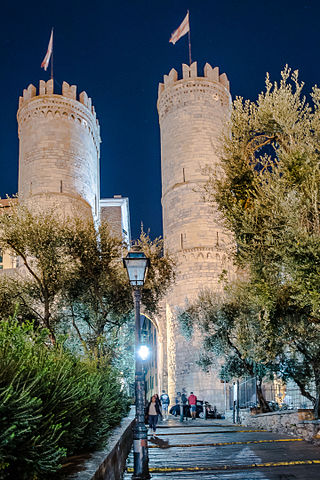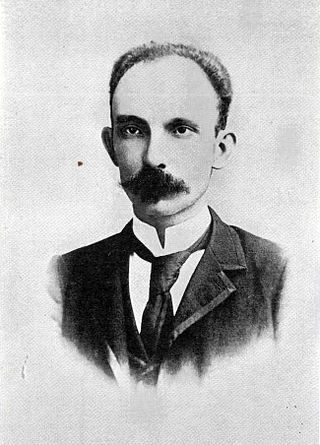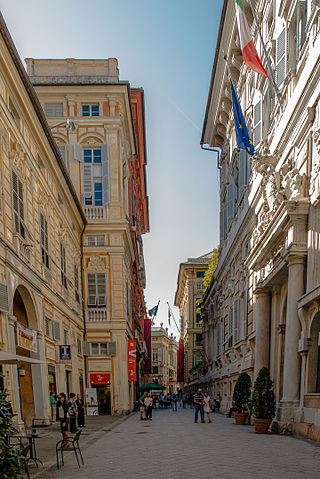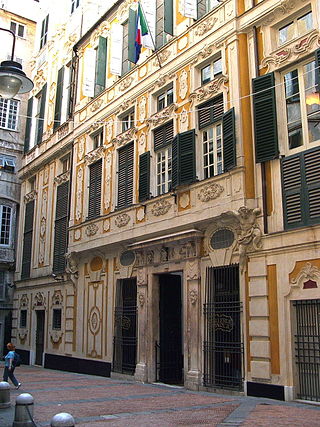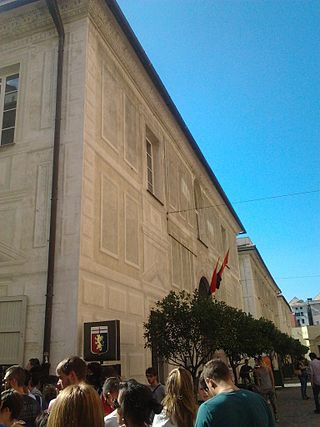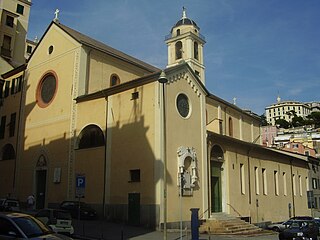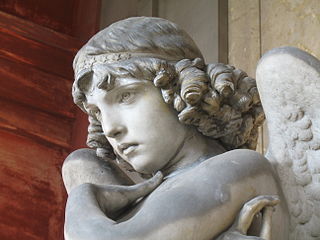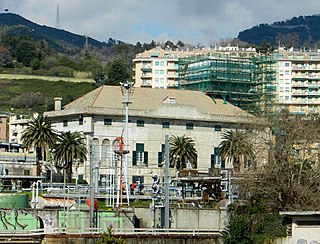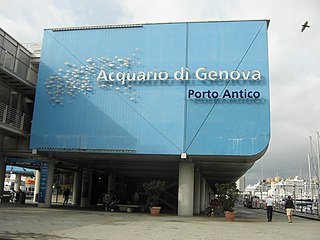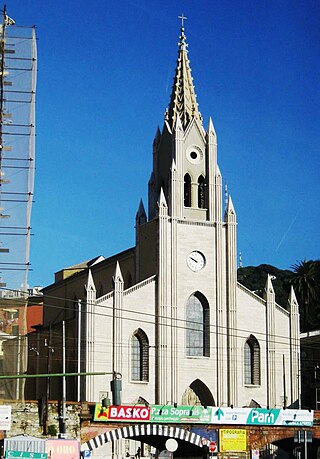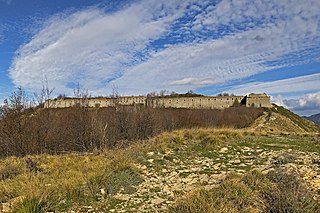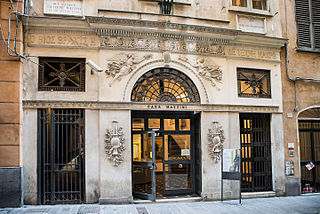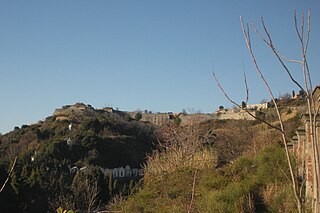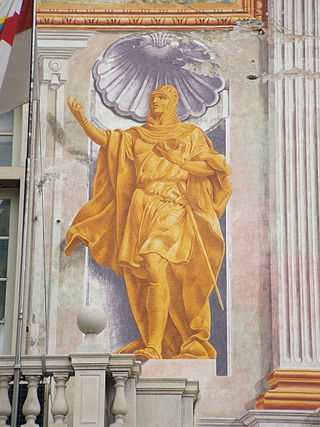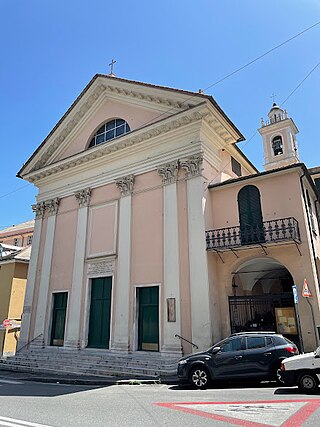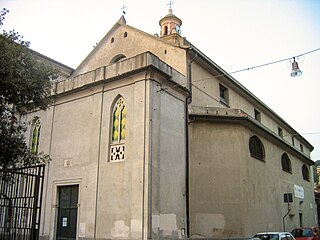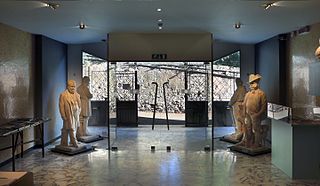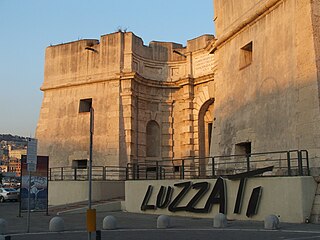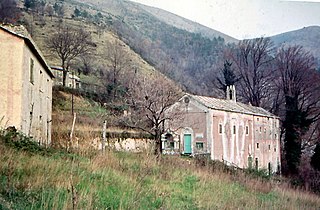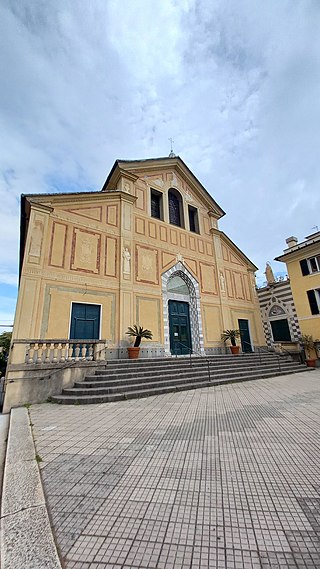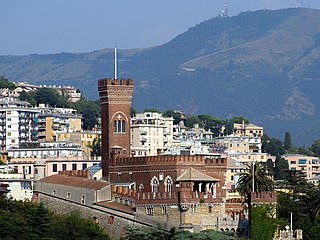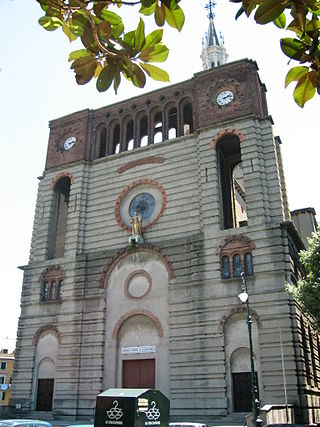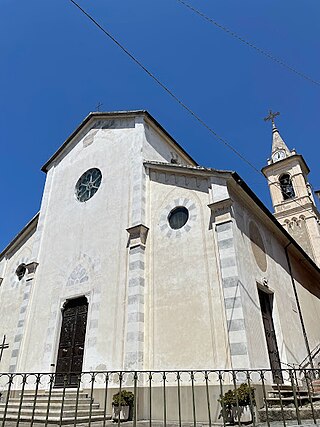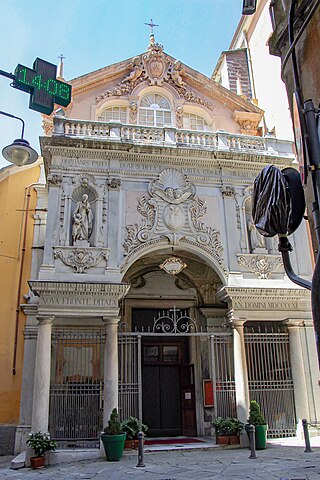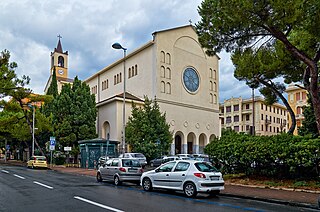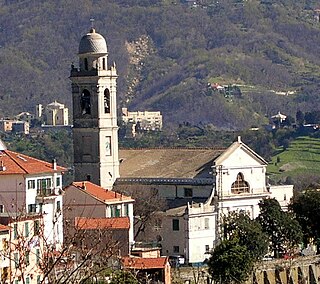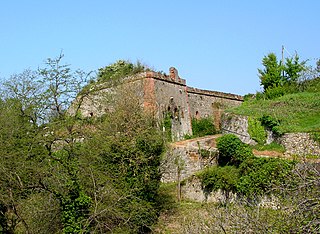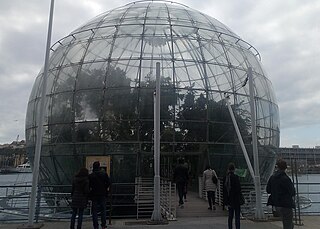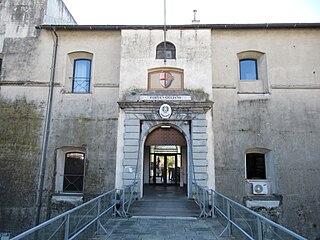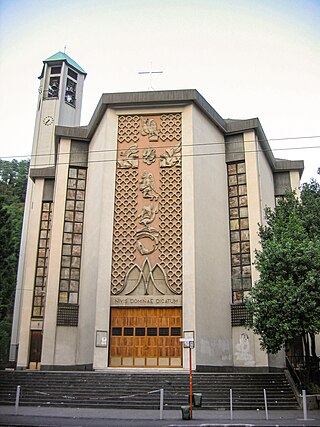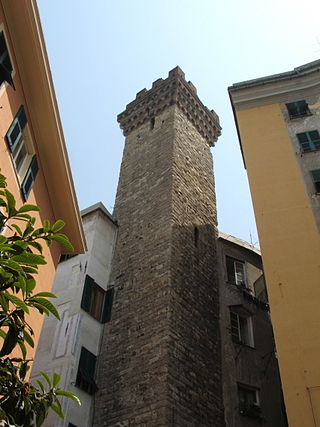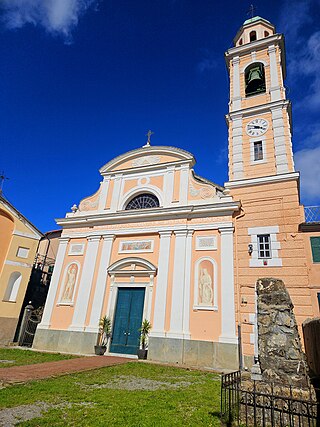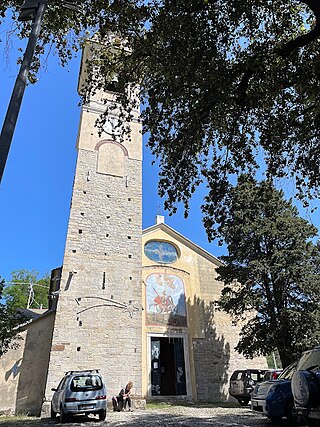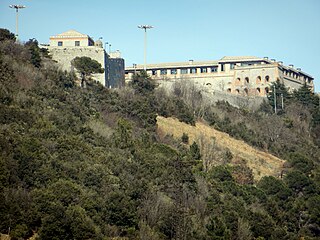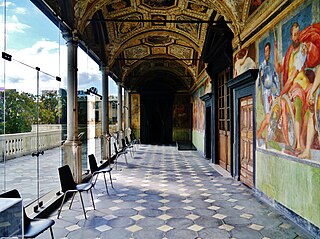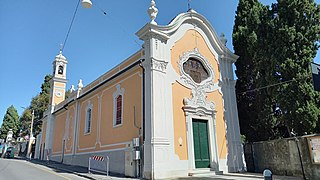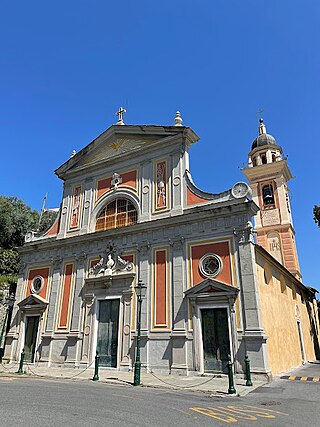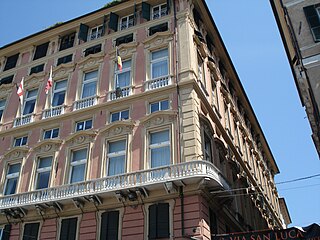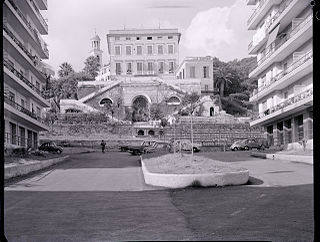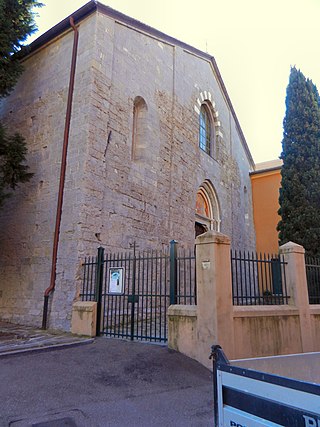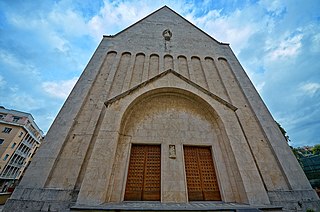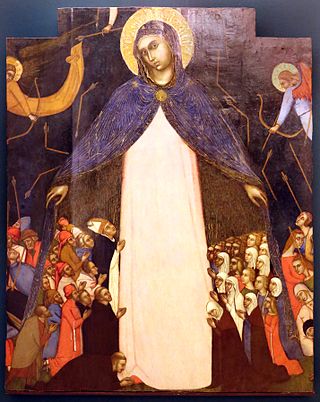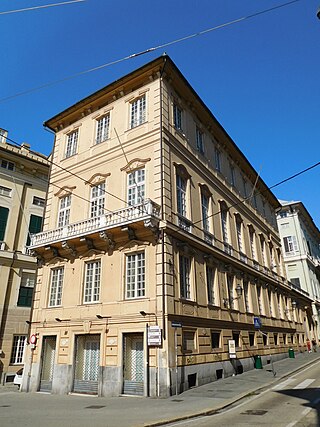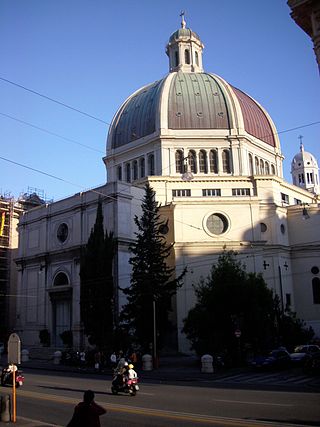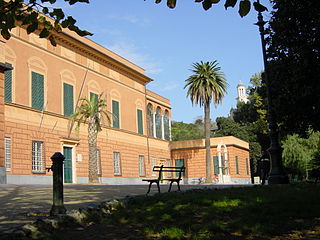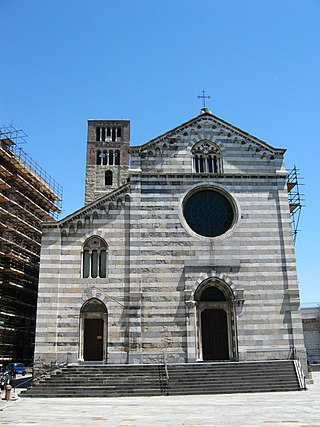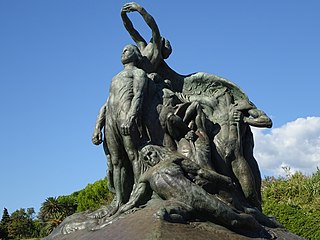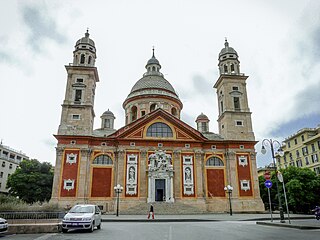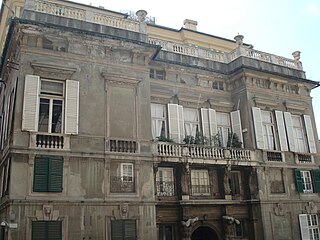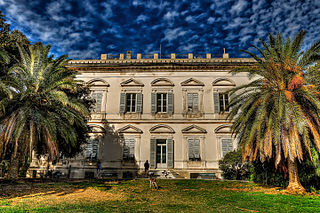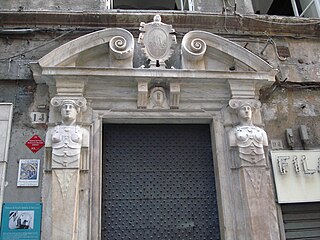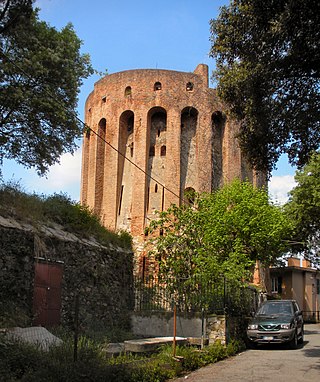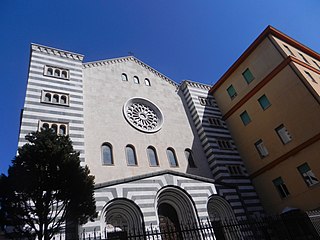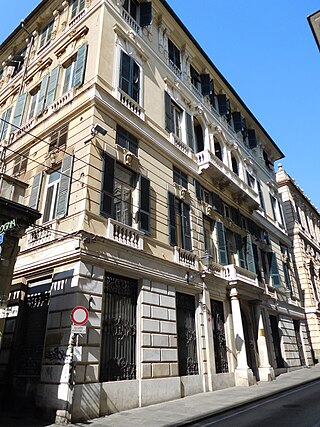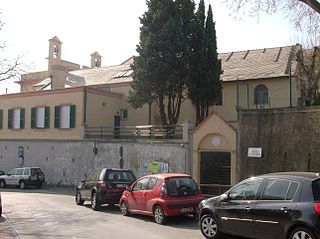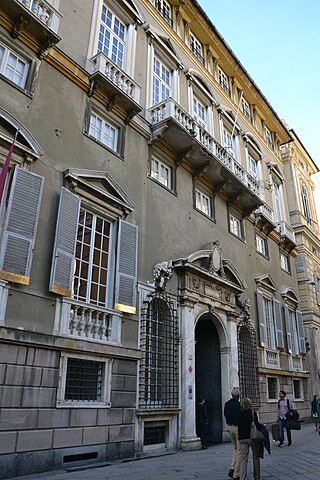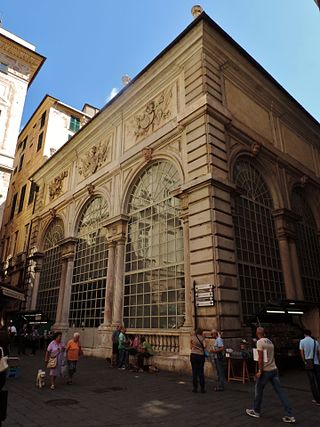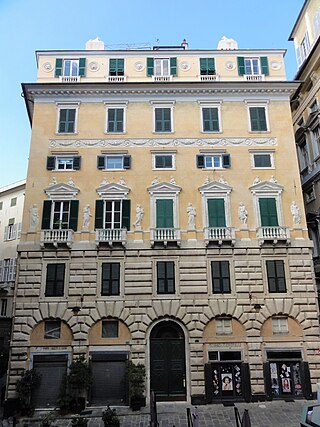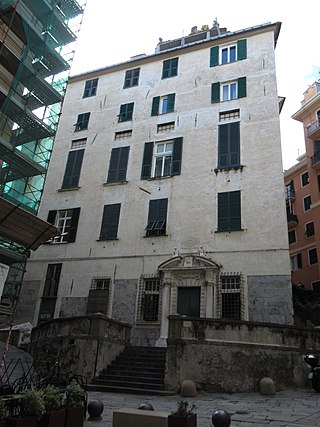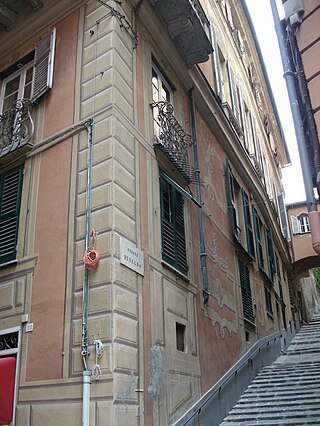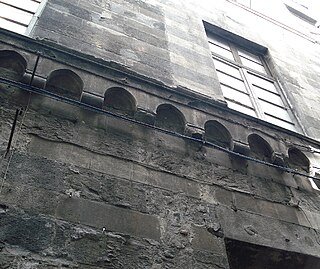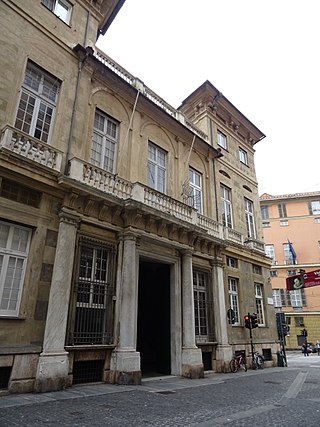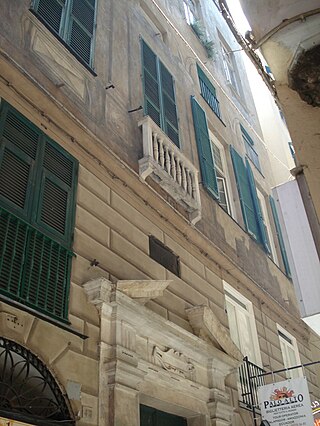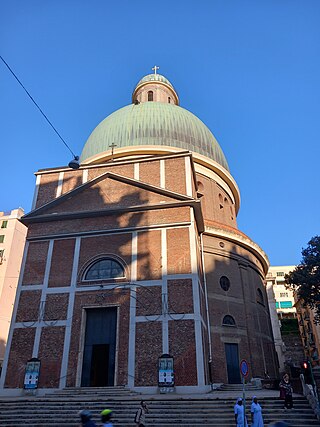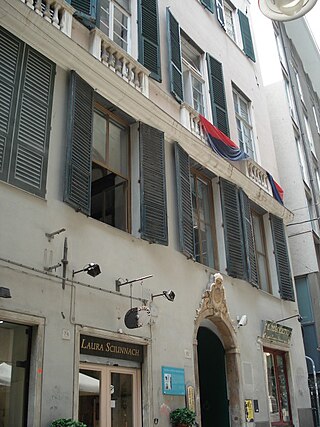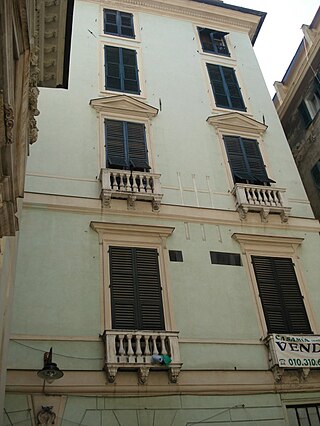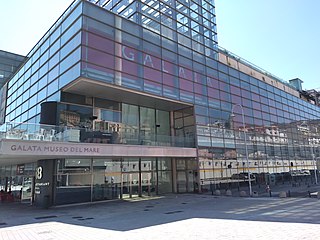100 Sights in Genoa, Italy (with Map and Images)
Legend
Premium Sights
Book tickets, guided tours and activities in Genoa.
Guided Free Walking Tours
Book free guided walking tours in Genoa.
Welcome to your journey through the most beautiful sights in Genoa, Italy! Whether you want to discover the city's historical treasures or experience its modern highlights, you'll find everything your heart desires here. Be inspired by our selection and plan your unforgettable adventure in Genoa. Dive into the diversity of this fascinating city and discover everything it has to offer.
Sightseeing Tours in GenoaActivities in Genoa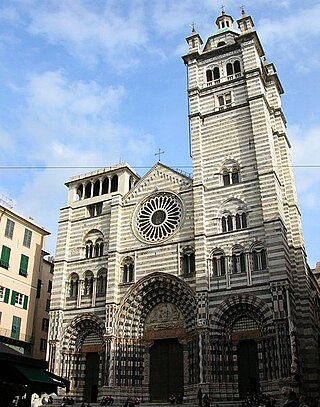
Genoa Cathedral or Metropolitan Cathedral of Saint Lawrence is a Roman Catholic cathedral in the Italian city of Genoa. It is dedicated to Saint Lawrence, and is the seat of the Archbishop of Genoa. The cathedral was consecrated by Pope Gelasius II in 1118 and was built between the twelfth century and the fourteenth century as fundamentally a medieval building, with some later additions. Secondary naves and side covers are of Romanesque style and the main facade is Gothic from the early thirteenth century, while capitals and columns with interior corridors date from the early fourteenth century. The bell tower and dome were built in the sixteenth century.
The Porta Soprana or Porta di Sant'Andrea was one of the entrance gates to the city of Genoa. One of the main medieval stone architectures of the Ligurian capital, it is located on the top of the Piano di Sant'Andrea, from which it takes its name.
3. José Martí
José Julián Martí Pérez was a Cuban nationalist, poet, philosopher, essayist, journalist, translator, professor, and publisher, who is considered a Cuban national hero because of his role in the liberation of his country from Spain. He was also an important figure in Latin American literature. He was very politically active and is considered an important philosopher and political theorist. Through his writings and political activity, he became a symbol of Cuba's bid for independence from the Spanish Empire in the 19th century, and is referred to as the "Apostle of Cuban Independence". From adolescence on, he dedicated his life to the promotion of liberty, political independence for Cuba, and intellectual independence for all Spanish Americans; his death was used as a cry for Cuban independence from Spain by both the Cuban revolutionaries and those Cubans previously reluctant to start a revolt.
4. Genoa: Le Strade Nuove and the system of the Palazzi dei Rolli
Genoa: Le Strade Nuove and the system of the Palazzi dei Rolli is a UNESCO World Heritage Site which includes a number of streets and palaces in the center of Genoa, in Northwestern Italy.The Strade Nuove are a group of streets built by the Genoese aristocracy during the expansion of the city at a time when the Republic of Genoa was at the height of its financial and seafaring power. These are Via Giuseppe Garibaldi and Via Balbi, later followed by Via Cairoli. The Palazzi dei Rolli are a group of palaces - most of which also date from the late 16th and early 17th centuries - which were associated to a particular system of ‘public lodging’ in private residences, whereby notable guests on State visit to the Republic were hosted in one of these palaces on behalf of the State.
Wikipedia: Genoa: Le Strade Nuove and the system of the Palazzi dei Rolli (EN)
5. Lanterna di Genova
The Lighthouse of Genoa, known as La Lanterna, is the main lighthouse serving the Port of Genoa. Besides being an important aid to night navigation in the vicinity, the tower serves as a symbol and a landmark for the city of Genoa. Rebuilt in its current shape in 1543 replacing the former lighthouse, it is the world's fourth oldest lighthouse, following the Tower of Hercules in A Coruña, Spain, Hook Head Lighthouse in Ireland, Kõpu Lighthouse, on the island of Hiiumaa, Estonia. Built of masonry, at 76 m (249 ft), it is constructed in two square portions, each one capped by a terrace. The whole structure is crowned by a lantern from which the light is shone.
6. Galleria Nazionale di Palazzo Spinola
The National Gallery of Palazzo Spinola is a state museum located inside Palazzo Spinola di Pellicceria, a sixteenth-century noble building located at number 1 of Piazza di Pellicceria, in the heart of the historic center of Genoa. On 13 July 2006 it was included in the list of forty-two palaces registered with the Rolli of Genoa, declared a UNESCO World Heritage Site. A splendid example of an aristocratic residence between the seventeenth and eighteenth centuries, the museum houses works of exceptional value such as the Ecce Homo by Antonello da Messina, the Portrait of Ansaldo Pallavicino by Antoon van Dyck and the Portrait of Giovanni Carlo Doria on horseback by Peter Paul Rubens. The third floor is occupied by the National Gallery of Liguria, where, according to the will of the last two owners, the marquises Paolo and Franco Spinola, who in 1958 donated the building to the State so that it would become a public museum, the state's artistic acquisitions are exhibited.
Wikipedia: Galleria nazionale di palazzo Spinola (IT), Website
7. Museo della Storia del Genoa
The Museum of the History of Genoa is the multimedia museum dedicated to the history of Genoa Cricket and Football Club. It is headed by the Genoa 1893 Foundation, a participatory body that represents the widespread interests of Genoa supporters and the Genoese community, and is based in the San Giobatta building in the Old Port of Genoa. The museum has been recognized by the Ministry of Cultural Heritage and Activities as being of significant cultural interest.
8. Chiesa di Nostra Signora del Carmine e Sant'Agnese
The church of Our Lady of Mount Carmel and St. Agnes is one of the historic churches of Genoa. It is located in the district known as the Carmine in via Brignole De Ferrari, a short distance from the central via Balbi; his parish community is part of the "Centro Ovest" vicariate of the archdiocese of Genoa. The prior of N.S. del Carmine has the title of abbot.
Wikipedia: Chiesa di Nostra Signora del Carmine e Sant'Agnese (IT)
9. Cimitero Monumentale di Staglieno
The Cimitero monumentale di Staglieno is an extensive monumental cemetery located on a hillside in the district of Staglieno of Genoa, Italy, famous for its monumental sculpture. Covering an area of more than a square kilometre, it is one of the largest cemeteries in Europe.
10. Cappella di San Filippo Neri
The Villa Lomellini Rostan is a historic Italian noble residence, located in Genoa in the Multedo district. For its magnificence and the beauty of its gardens, before the industrial development of the second half of the twentieth century distorted the surrounding area, it was an important cultural and landscape reference point for this area of western Genoa. It is located a short distance from the mouth of the Varenna, which marks the border between the Pegli and Multedo districts.
11. Parco storico Villa Duchessa di Galliera
Villa Brignole Sale Duchessa di Galliera is a Genoese noble villa located in the district of Voltri on the Castellaro and Givi hills. It developed following the successive annexation of several properties.
12. Chiesa del Gesù e dei Santi Ambrogio e Andrea
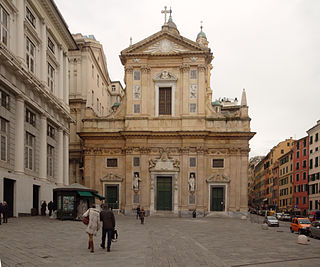
The church of the Gesù in Genoa is located in the city center, in Piazza Matteotti, adjacent to Piazza De Ferrari. Ruled by the Jesuits starting from the sixteenth century, the very rich interiors contain works by Rubens, Reni, and the major authors of the Genoese Baroque.
Wikipedia: Chiesa del Gesù e dei Santi Ambrogio e Andrea (IT)
13. Chiesa di Santa Maria Immacolata
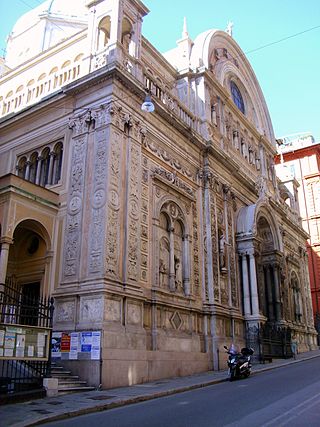
The basilica and abbey of Santa Maria Immacolata is a Catholic place of worship located in the Castelletto district, in via Assarotti, in the municipality of Genoa. It is one of the greatest examples of sacred neo-Renaissance architecture in the Ligurian capital. It was the first church to be dedicated to the Immaculate Conception after Pope Pius IX proclaimed its dogma on December 8, 1854. His parish community is part of the vicariate of Castelletto.
14. Aquarium of Genoa
The Aquarium of Genoa is the largest aquarium in Italy. Located in the Old Harbour area of Genoa, Italy, the 33,000-square-foot (3,100 m2) aquarium is a member organization of the European Association of Zoos and Aquaria (EAZA), and welcomes more than 1.2 million visitors each year.
15. Chiesa di San Teodoro
The church of San Teodoro is an Italian religious building in Genoa, Italy, located in the district of the same name that took its name from it. The original structure was one of the oldest in Genoa: the original Romanesque church, of which there was news from the tenth century, was demolished for urban planning reasons in 1870, and a new one was rebuilt not far away. The parish community is part of the San Teodoro-Oregina vicariate of the Archdiocese of Genoa.
16. Chiesa di San Luca
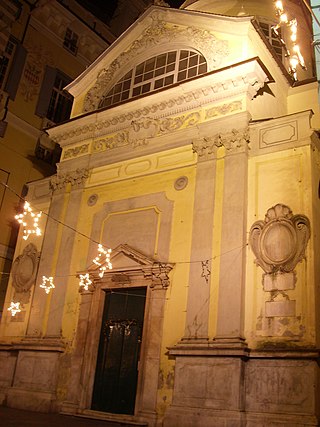
The church of San Luca is a place of Catholic worship located in the homonymous square of the historic center of Genoa, in the Maddalena district. His parish community is part of the vicariate "historic center" of the archdiocese of Genoa. The internal decoration and the works of art of Domenico Piola, Filippo Parodi and the Grechetto are among the highest realizations of the Genoese Baroque. The parish priest has the title of provost of San Luca and Abbot of S. Defendente.
17. Forte Monteratti
Fort Monteratti or Fort Ratti is a military barracks in Genoa built between 1831 and 1842 by the Savoy Government to defend, precisely, the "Monte Ratti" relief, located behind the Genoese districts of Marassi and Bavari, from any sieges by the enemy who could, from there, head undisturbed towards the then small villages of Sturla, Albaro and San Martino, from which to head towards the capital.
18. Museo Risorgimento - Casa Mazzini
The Museum of the Risorgimento - Mazzinian Institute is a museum center in Genoa, established in 1934, entirely dedicated to the events of the Italian Risorgimento and, in particular, to some prominent figures of that specific moment in Italian history closely linked to the Ligurian capital, such as Giuseppe Mazzini, Giuseppe Garibaldi and Goffredo Mameli, author of the Canto degli Italiani, the Italian national anthem.
Wikipedia: Museo del Risorgimento e istituto mazziniano (IT), Website
19. Forte Tenaglia
Forte Tenaglia is a fortified work in Genoa, dating back to 1633. Originally inserted in the course of the "New Walls" to defend the city, it is located on the heights of Sampierdarena, on a ridge overlooking the Polcevera valley.
20. Chiesa dei Santi Pietro e Bernardo alla Foce
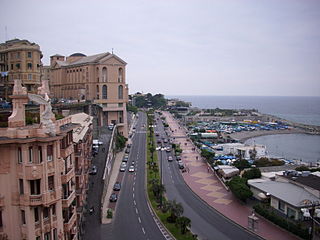
The church of Saints Peter and Bernard at the Foce is a Catholic place of worship located in the Foce district, between Via Nizza and the Corso Italia promenade below, in the municipality of Genoa in the metropolitan city of Genoa. The church is the seat of the parish of the same name in the vicariate of Albaro in the archdiocese of Genoa.
Wikipedia: Chiesa dei Santi Pietro e Bernardo alla Foce (IT)
21. Guglielmo Embriaco
Guglielmo Embriaco, was a Genoese merchant and military leader who came to the assistance of the Crusader States in the aftermath of the First Crusade. Embriaco is considered one of the founders of what would become the Republic of Genoa.
22. San Martino d'Albaro
The church of San Martino d'Albaro is a Catholic place of worship located in the district of San Martino, between Via Silvio Lagustena and Via Vernazza, in the municipality of Genoa in the metropolitan city of Genoa. The church is the seat of the parish of the same name in the vicariate of San Martino-Valle Sturla in the Archdiocese of Genoa.
23. Chiesa di San Francesco
The church of San Francesco alla Chiappetta, with adjoining convent, is a religious building in the Genoese district of Bolzaneto, in Val Polcevera. His parish community is part of the "Bolzaneto - Sant'Olcese - Serra Riccò" vicariate of the Archdiocese of Genoa.
24. Chiesa di Nostra Signora del Rimedio
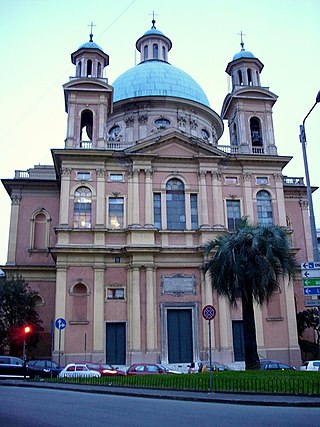
The church of Our Lady of the Remedy is a Catholic place of worship located in the Foce district, in Piazza Gaetano Alimonda, in the municipality of Genoa in the metropolitan city of Genoa. The church is the seat of the parish of the same name of the vicariate of Carignano-Foce of the archdiocese of Genoa. The church is also known by the Genoese as the Church of the Angel because from 1712 the building was officiated by a confraternity, named after the Guardian Angel, who remained there for 84 years.
25. Collezione Wolfson
The Wolfsoniana is a modern art gallery that is part of the museum center of the Genoese east, located in via Serra Gropallo 4, in the Nervi district, includes hundreds of works of art in its permanent exhibition, and hosts numerous temporary exhibitions every year. The museum was opened to the public in 1999 and included in the "Polo dei Musei e dei Parchi di Nervi" at the behest of its founder Mitchell Wolfson Jr..
26. Forte Richelieu
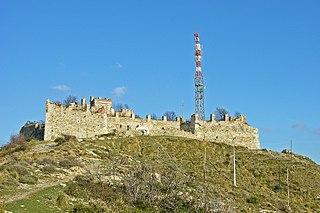
The Richelieu Fort is a fort located on the Camaldoli hill, a watershed between the Quezzi valley and that of the Sturla stream; with Fort Monteratti to the north, Fort Quezzi to the west and the forts of Santa Tecla, San Martino and San Giuliano to the south-west, it formed an effective defensive sector to protect the north-east of the city of Genoa.
27. Museo Emanuele Luzzati
The Emanuele Luzzati museum was located in Genoa, in the Porto Antico area. Inaugurated in June 2008, in October 2019 the museum spaces were occupied by the infopoint to follow the work on the new Bridge to Genoa, effectively changing the intended use of the museum structure.
28. Ruderi dell'Abbazia di Cassinelle
The ruins of the small abbey complex of Cassinelle are located in the municipality of Genoa, in the hinterland of the Sestri Ponente district, at 378 m above sea level, on a plateau in the upper valley of the stream of the same name.
29. Chiesa di San Francesco d'Albaro
The church of San Francesco d'Albaro is a Catholic place of worship located in Via Albaro, in the Genoese district of the same name. The church is the seat of the parish of Saints Nazario and Celso and San Francesco d'Albaro of the vicariate of Albaro of the archdiocese of Genoa and is entrusted to the Friars Minor Conventual.
30. Castello D'Albertis
D'Albertis Castle is a historical residence in Genoa, north-western Italy. It was the home of sea captain Enrico Alberto d'Albertis and was donated to the city of Genoa on his death in 1932. It currently houses the Museo delle Culture del Mondo, inaugurated in 2004.
31. Forte Quezzi
Forte Quezzi is a fort in Genoa, located on the top of the Colle della Calcinara, which dominates part of the Bisagno and Quezzi valleys. It is next to another fort that is part of the group of Genoese hill fortifications: Fort Monteratti.
32. Chiesa del Sacro Cuore e San Giacomo
The church of the Sacred Heart and San Giacomo di Carignano is a religious building in the Genoese district of Carignano, in via Jacopo Ruffini; its parish community is part of the "Carignano-Foce" Vicariate of the Archdiocese of Genoa.
Wikipedia: Chiesa del Sacro Cuore e San Giacomo di Carignano (IT)
33. Chiesa di San Rocco di Vernazza
The church of San Rocco di Vernazza is a Catholic place of worship in the municipality of Genoa, located in Via del Sole, in the locality of Vernazza, which is part of the Borgoratti district. The church is the seat of the parish of the same name in the vicariate of San Martino-Valle Sturla in the Archdiocese of Genoa.
34. Chiesa di Santa Maria Maddalena
The church of Santa Maria Maddalena and San Gerolamo Emiliani, known simply as the church of the Magdalene, is a religious building located in the square of the same name in the historic center of Genoa; the church gives its name to the Maddalena district. The current church was built between the end of the sixteenth century and the first half of the seventeenth on the site of an older religious building. His parish community is part of the "Centro Ovest" vicariate of the archdiocese of Genoa.
35. Chiesa dei Santi Pietro e Teresa del Bambin Gesù
The church of St. Peter the Apostle and St. Teresa of the Child Jesus is a Catholic place of worship located in the Albaro district, in via Francesco Domenico Guerrazzi, in the municipality of Genoa in the metropolitan city of Genoa. The church is the seat of the parish of the same name in the vicariate of Albaro in the archdiocese of Genoa.
Wikipedia: Chiesa dei Santi Pietro e Teresa del Bambin Gesù (IT)
36. Chiesa di San Martino
The church of San Martino di Murta is a Catholic place of worship in Genoa, located in the town of Murta, a hamlet of the Bolzaneto district. His parish community is part of the "Bolzaneto - Sant'Olcese - Serra Riccò" vicariate of the Archdiocese of Genoa.
37. Chiesa di San Marco al Molo
The church of San Marco al Molo is a Catholic religious building in the historic center of Genoa, located in Via del Molo, near the ancient port of Genoa. His parish community is part of the "Centro Est" vicariate of the archdiocese of Genoa.
38. Forte Crocetta
Forte Crocetta is a disused military structure that is part of the defensive fortifications of Genoa. The fort is located just upstream of Belvedere, on the heights of Sampierdarena. It is located in the village of Crocetta, on the area already occupied by the seventeenth-century convent of the Augustinians and the adjoining church of the Holy Crucifix, built by the religious Fr. Gio. Batta Fabra, of the Augustinian order.
39. Palazzo Gio Battista Centurione
The Gio Battista Centurione Palace, also known as Palazzo Centurione Cambiaso or Palazzo Andrea Pitto, is an Italian historic building, located in Piazza Fossatello 3, in the historic center of Genoa. It is one of the Palazzi dei Rolli that were designated, at the time of the Republic of Genoa, to host high-ranking guests during state visits on behalf of the Genoese government.
40. Biosfera
The Biosphere, commonly known as the Renzo Piano Bubble, is a glass and steel structure located in the Old Port of Genoa and built in 2001. The spherical structure, with a diameter of 20 m, a total weight of 60 t and an exhibition area of about 200 m², is suspended over the sea, at Ponte Spinola, in the immediate vicinity of the aquarium.
41. Chiesa di Santa Maria in Passione
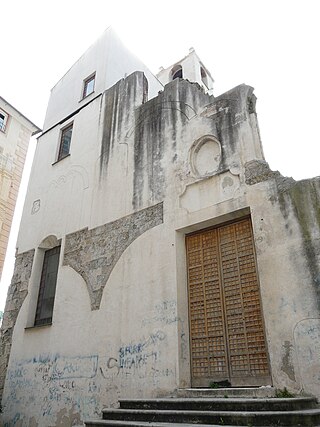
The church of Santa Maria in Passione was a religious building in the historic center of Genoa, located in the square of the same name on the hill of Castello, in the Molo district. Closed in the nineteenth century due to the laws of suppression of religious orders issued by the Savoy government, the complex including the church was first transformed into barracks and finally became the seat of the O. N.M.I., before being almost completely destroyed during the Second World War.
42. Forte San Giuliano
Forte San Giuliano is a fort located on the coast in the Genoese district of Albaro, between Punta Vagno and the small promontory of San Giuliano, not far from the abbey of the same name. With the Vagno Battery it formed a front to protect the coast east of Genoa against any enemy landings or naval bombardments.
43. Chiesa di Nostra Signora della Neve
The church of Our Lady of the Snows is an Italian religious building, located in the Genoese district of Bolzaneto, in Val Polcevera. His parish community is part of the "Bolzaneto - Sant'Olcese - Serra Riccò" vicariate of the Archdiocese of Genoa.
Wikipedia: Chiesa di Nostra Signora della Neve (Genova) (IT)
44. Chiesa di Santa Maria in Via Lata
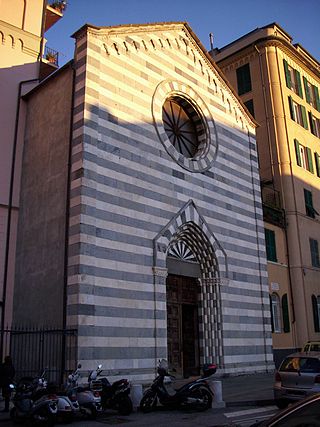
The church of Santa Maria in Via Lata, formerly an abbey of the Fieschi family, is a former religious building in Genoa, located on the hill of the same name in the Carignano district. It currently houses a restoration laboratory.
45. Torre degli Embriaci
The Torre Embriaci, also called Torre degli Embriaci, located in the oldest area of Genoa, where the Castello o Castrum stood. It is the only one of the numerous towers that were located in the current historic center of Genoa to have been spared by the edict of 1196 which wanted to cut all the city towers to 80 palms.
46. Chiesa di Santa Caterina
The church of the Santissima Annunziata di Portoria, better known as the church of Santa Caterina, is an Italian Catholic religious building, located in the city center of Genoa, in the district of Portoria.
Wikipedia: Chiesa della Santissima Annunziata di Portoria (IT)
47. Chiesa di San Giorgio di Bavari
The church of San Giorgio di Bavari is a Catholic place of worship located in the Bavari district, in Piazza San Giorgio di Bavari, in the municipality of Genoa in the metropolitan city of Genoa. The church is the seat of the parish of the same name in the vicariate of San Martino-Valle Sturla in the Archdiocese of Genoa.
48. Forte Begato
Forte Begato is a fortified work included in the "new walls" in defense of the city of Genoa, built on a vast plateau along the branch of the defensive belt that descended from the strong spur along the ridge of the Val Polcevera.
49. Villa del Principe
The Villa del Principe, Palazzo del Principe, or Palace of Andrea Doria in Fassolo is one of the main historical suburban villas of Genoa, Italy. It was built in the 16th century in an area that it is now located in the city center, but at the time of the construction of the villa was just outside of the city walls towards Capo di Faro and the Lanterna.
50. Chiesa di Sant'Erasmo
The church of Our Lady of Mercy and St. Erasmus is a Catholic place of worship located in the Nervi district, in Capolungo, in the municipality of Genoa in the metropolitan city of Genoa. The church is the seat of the parish of the same name in the vicariate of Nervi-Quinto in the archdiocese of Genoa.
Wikipedia: Chiesa di Nostra Signora della Mercede e Sant'Erasmo (IT)
51. Chiesa di Santa Maria della Cella

The church of Santa Maria della Cella is an Italian Catholic place of worship located in the municipality of Genoa, home to the parish of "Santa Maria della Cella and San Martino" and the vicariate of Sampierdarena of the Archdiocese of Genoa.
52. Chiesa di Sant'Ilario
The church of Sant'Ilario is a Catholic place of worship located in the Sant'Ilario district, in via Sant'Ilario, in the municipality of Genoa in the metropolitan city of Genoa. The church is the seat of the parish of the same name in the vicariate of Nervi-Quinto in the archdiocese of Genoa.
53. Raccolte Frugone
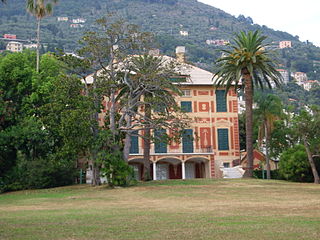
Collections Frugone is a museum structure that is part of the Nervi campus. It is based in the eighteenth-century Villa Grimaldi Fassio, in via Capolungo 9, inside the municipal park of the Genoa delegation.
54. Palazzo Emanuele Filiberto Di Negro
The Emanuele Filiberto Di Negro Palace is a historic Italian building, located in Via al Ponte Reale 2 and overlooking Piazza Caricamento, in the historic center of Genoa. It is one of the Palazzi dei Rolli designated, at the time of the Republic of Genoa, to host high-ranking guests on behalf of the government, during state visits.
55. Chiesa di San Nicola
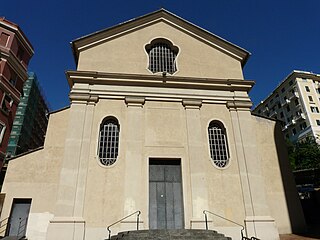
The church of San Nicola da Tolentino is a religious building in Genoa on the Madonnetta hill, on the way to the sanctuary of the Madonnetta, and its parish community is part of the Vicariate of Castelletto of the Archdiocese of Genoa.
56. Villa Durazzo-Pallavicini
The Villa Durazzo-Pallavicini is a villa with notable 19th-century park in the English romantic style and a small botanical garden. The villa now houses the Museo di Archeologia Ligure, and is located at Via Pallavicini 13, immediately next to the railway station in Pegli, a suburb of Genoa, Italy. The park and botanical garden are open daily except mondays.
57. Chiesa di Santa Maria del Prato
The church of Santa Maria del Prato is a Catholic place of worship located in the Albaro district, in via Giuseppe Parini, in the municipality of Genoa in the metropolitan city of Genoa. The building is located on the corner with Piazza Giacomo Leopardi, a short distance from the parish church of San Francesco d'Albaro.
58. Chiesa parrocchiale di Nostra Signora del Rosario
The church of Our Lady of the Rosary is a Catholic place of worship located in the Albaro district, in via Carlo e Nello Rosselli, in the municipality of Genoa in the metropolitan city of Genoa. The church is the seat of the parish of the same name in the vicariate of Albaro in the archdiocese of Genoa.
Wikipedia: Chiesa di Nostra Signora del Rosario (Genova) (IT), Url
59. Museo speleologico del Monte Gazzo
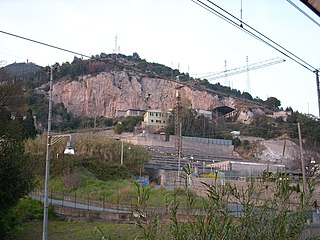
The Speleological Museum of Mount Gazzo is a speleological museum located on the summit of Mount Gazzo of the same name, at 419 m above sea level, near Sestri Ponente, a western district of Genoa. The museum was inaugurated in May 1969.
60. Parrocchia di Santa Maria dei Servi
The church of Santa Maria dei Servi is a Catholic place of worship located in the Foce district, in largo Santa Maria dei Servi, in the municipality of Genoa in the metropolitan city of Genoa. The church is the seat of the parish of the same name of the vicariate of Carignano-Foce of the archdiocese of Genoa.
61. Palazzo Gio Francesco Balbi
The Gio Francesco Balbi Palace, also known as the Balbi Cattaneo Palace, is a historic Italian building, located in Via Balbi 2, also overlooking Piazza della Nunziata, in the historic center of Genoa. It is one of the Palazzi dei Rolli that were designated, at the time of the Republic of Genoa, to host high-ranking guests during state visits on behalf of the Genoese government.
62. Chiesa di Santa Croce e San Camillo de Lellis
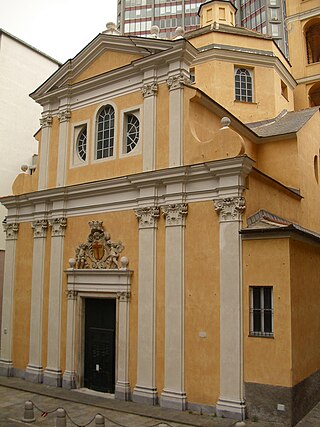
The church of Santa Croce and San Camillo de Lellis is an Italian religious building, located in the city center of Genoa, in the Portoria district, a few tens of meters from the court and the executive area of Piazza Piccapietra.
Wikipedia: Chiesa di Santa Croce e San Camillo de Lellis (IT)
63. Palazzo Podestà
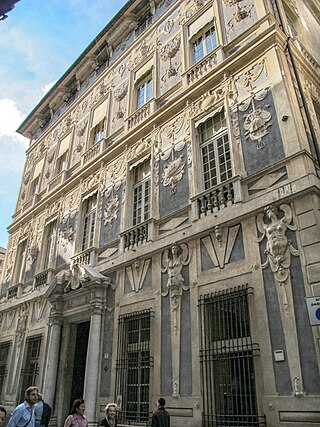
The palazzo Podestà or Nicolosio Lomellino is a building located in via Garibaldi (Genoa) at number 7 in the historical centre of Genoa, included on 13 July 2006 in the list of the 42 palaces inscribed in the Rolli di Genova that became World Heritage by UNESCO on that date.
64. Chiesa di Nostra Signora Assunta e Santa Zita
The church of Our Lady of the Assumption and Santa Zita is a Catholic place of worship located in the Borgo Pila area in the Foce district, between Via di Santa Zita and Corso Buenos Aires, in the municipality of Genoa in the metropolitan city of Genoa. The church is the seat of the parish of the same name in the vicariate of Albaro in the archdiocese of Genoa.
Wikipedia: Chiesa di Nostra Signora Assunta e Santa Zita (IT)
65. Villa Centurione Doria
The Villa Doria Centurione is a historic Italian noble residence, located in the municipality of Genoa, in the residential district of Pegli. The building, a typical example of pre-Alessian Mannerist architecture, is home to the naval museum of Pegli.
66. Chiesa di Santo Stefano
The church of Santo Stefano is a religious building in the village of Geminiano, a hamlet of the Genoese district of Bolzaneto, in the Polcevera valley; his parish community is part of the vicariate of Bolzaneto of the archdiocese of Genoa.
67. Monumento ai Mille
The Monument to the Thousand in Genoa is a bronze sculptural group created by the Genoese sculptor Eugenio Baroni (1880-1935) dedicated to Garibaldi's expedition of the Thousand. Inaugurated on May 5, 1915, it is located in Quarto dei Mille, a few meters from the rock from which Garibaldi's expedition set sail in 1860.
68. Basilica di Santa Maria Assunta di Carignano
Santa Maria Assunta is a Renaissance church in Genoa, Italy. It is located in a residential sector called Carignano located on the hills just above the city center, thus the church is also known as Santa Maria Assunta di Carignano.
69. Palazzo Gio Carlo Brignole
The Gio Carlo Brignole Palace is a historic Italian building, located in Piazza della Meridiana 2, in the historic center of Genoa. It is one of the Palazzi dei Rolli that were designated, at the time of the Republic of Genoa, to host high-ranking guests during state visits on behalf of the Genoese government.
70. Museo d'arte contemporanea Villa Croce
The Villa Croce Museum of Contemporary Art is a permanent collection of Italian and international contemporary art hosted in a villa in the Carignano quarter of Genoa, northwestern Italy. The villa, donated to the city by the Croce family in 1951, is surrounded by public park with sea views, overhanging the Fiera di Genova exhibition center. It contains more than 3000 works of arts.
Wikipedia: Villa Croce Museum of Contemporary Art (EN), Website
71. Basilica Santa Maria delle Vigne
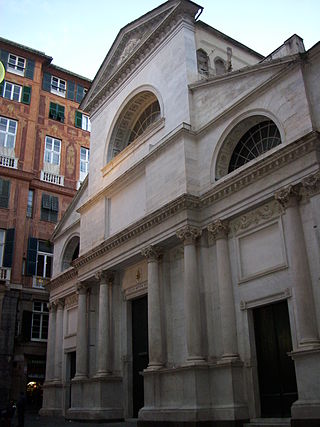
Santa Maria delle Vigne is a Roman Catholic basilica church in Genoa, Italy. It was built in the 10th century. The main altar was completed in 1730 by Giacomo Antonio Ponsonelli. The church is also the final resting place of the leading early Italian composer Alessandro Stradella, who was murdered in 1682.
72. Giardino botanico Clelia Durazzo Grimaldi
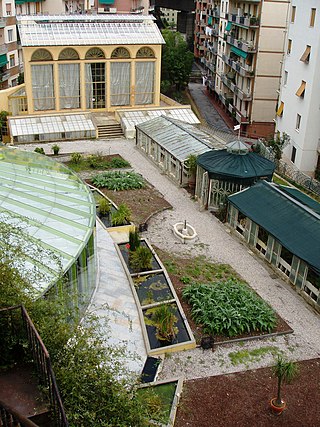
The Giardino botanico Clelia Durazzo Grimaldi is a small botanical garden located on the grounds of the Villa Durazzo-Pallavicini in Pegli, a suburb of Genoa, Italy. It is a part of the romantic historical park made by Ignazio Pallavicini in 1846.
73. Palazzo Nicolò Spinola di San Luca
The Nicolò Spinola Palace is a historic Italian building, located in Via San Luca at number 14, in the historic center of Genoa, included on July 13, 2006 in the list among the 42 palaces registered in the Rolli of Genoa that became a UNESCO World Heritage Site on that date.
74. San Torpete
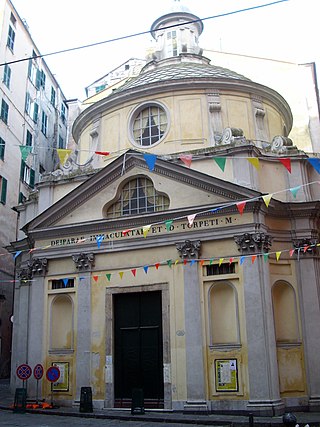
San Torpete is a church in central Genoa, northern Italy, dedicated to Saint Torpes. It was founded in the 11th century by local merchants. It was rebuilt in 1730 under designs conceived by Giovanni Antonio Ricca.
75. Torre San Bernardino
Torre San Bernardino located on the heights of Castelletto, is one of the nineteenth-century towers built to defend the core of the city of Genoa. Its construction began around 1820. Completed five years later, the tower was mainly used as an advanced position of the nearby Porta San Bernardino.
76. Chiesa di Santa Maria di Castello

Santa Maria di Castello is a church and religious complex in Genoa, Italy. Administrated for a long time by the Dominicans, it is located in the Castello hill of the city, where in the Middle Ages a bishop's fortified castle existed. The church is flanked by the large Tower of the Embriaci.
77. Chiesa di Sant'Eugenio
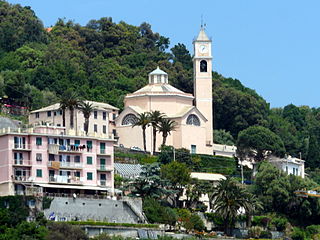
The church of Sant'Eugenio in Crevari is a religious building located in Via Giacomo Canepa in Crevari, in the Voltri district of Genoa. His parish community is part of the vicariate of Pra'-Voltri-Arenzano of the Archdiocese of Genoa.
78. Chiesa di San Giovanni Bosco e San Gaetano
The church of San Giovanni Bosco and San Gaetano, commonly called the church of San Gaetano, is a Catholic religious building in the Genoese district of Sampierdarena. His parish community is part of the vicariate of Sampierdarena of the Archdiocese of Genoa.
79. Museo d'arte orientale Edoardo Chiossone
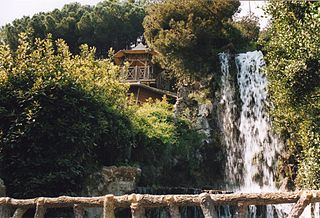
The Edoardo Chiossone Museum of Oriental Art in Genoa, Italy is an important collection of Asian art, one of the most significant collections in Europe and in Italy, along with the museums of Venice and Rome.
80. Palazzo Francesco Balbi Piovera
The palazzo Francesco Maria Balbi Piovera' is a building located in via Balbi at number 6 in the historical centre of Genoa, included on 13 July 2006 in the list of the 42 palaces inscribed in the Rolli di Genova that became World Heritage by UNESCO on that date. The building, also known by the name of palazzo Raggio from the name of the armor who purchased it in the 19th century, is today the seat of the Faculty of Letters of the University of Genoa.
81. Chiesa di San Bernardino
The church of Our Lady of Lourdes and St. Bernard - also known as the church of San Bernardino - is a place of worship in Genoa. It is located on the upper San Rocchino slope and is part of the vicariate of Castelletto. The building is home to the mother house of the Capuchin friars of the Ligurian Province.
Wikipedia: Chiesa di Nostra Signora di Lourdes e San Bernardo (IT)
82. Basilica di Nostra Signora dell'Assunta
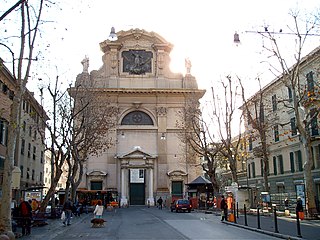
Basilica of Our Lady of the Assumption is a Roman Catholic church in the town of Genoa, in the Province of Genoa and the region of Liguria, Italy. This church was constructed during 1610–1624. The Baroque-style facade was added in 1932, design of the architect Piero de Barbieri; the sculptor Luigi Venzano contributed the facade statues of St. John the Baptist and St. Joseph, while the central relief depicts the Madonna. The interior was decorated across the centuries and includes works by Giulio Benso, Domenico Piola, Nicolò Barabino, and Gian Stefano Rossi.
83. Palazzo Giacomo Spinola dei Marmi
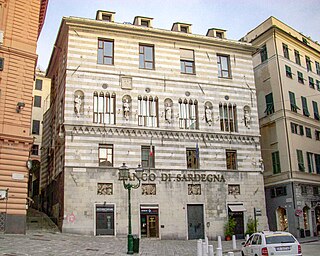
The palazzo Giacomo Spinola or palazzo Giacomo Spinola di Luccoli is a building located in Piazza delle Fontane Marose at number 6 in Genoa, included on 13 July 2006 in the list of the 42 palaces inscribed in the Rolli di Genova that became World Heritage by UNESCO on that date. The palace is now home to the Banco di Sardegna.
84. Palazzo Baldassarre Lomellini
The palazzo Baldassarre Lomellini also known as palazzo di Cristoforo Spinola or palazzo Campanella is a building located in via Garibaldi at number 12 in the historical centre of Genoa, included on 13 July 2006 in the list of the 42 palaces inscribed in the Rolli di Genova that became World Heritage by UNESCO on that date.
Wikipedia: Palazzo Campanella o di Baldassarre Lomellini (EN)
85. Loggia della Mercanzia
The Loggia della Mercanzia is one of the most representative buildings in the historical centre of Genoa. It is located in Piazza Banchi, at the corner with Via San Luca, in the ancient sestiere of the Maddalena, not far from the church of San Pietro in Banchi, in the commercial heart of the ancient city.
86. Palazzo Cipriano Pallavicini
The palazzo Cipriano Pallavicini is a building located in the historical centre of Genoa in Piazza Fossatello at number 2, which is one of the 42 palaces included in the site called Le Strade Nuove e il Sistema dei Palazzi dei Rolli di Genova that became part of the UNESCO World Heritage on 13 July 2006.
87. Palazzo Belimbau
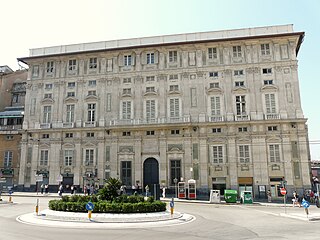
The palazzo Belimbau, also known as palazzo Antoniotto Cattaneo or Palazzo Francesco De Ferrari, is a building located in Piazza della Nunziata at number 2 in Genoa, included on 13 July 2006 in the list of the 42 palaces inscribed in the Rolli di Genova that became World Heritage by UNESCO on that date.
88. Chiesa di San Pancrazio
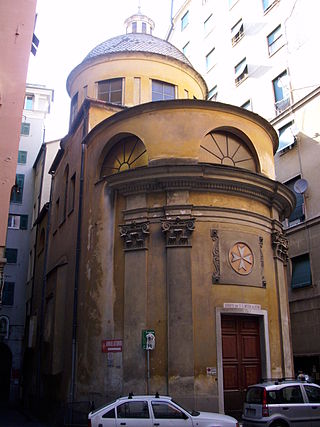
The church of San Pancrazio is found in central Genoa, in front of the piazza named after the same saint. A church at the site was first linked to the nearby Benedictine Abbey of San Siro in the 11th century. A document from the 16th century notes that the church had been for centuries endowed by prominent Genoese families including the Calvi and Pallavicini. The present layout dates into the 18th century. In 1684, the church was demolished by the bombardment of Genoa by the naval forces of Louis XIV of France. The architect Antonio Maria Ricca designed the present structure. The church was again damaged by aerial bombing during the Second World War. It is now attached to the Sovereign Military Order of Malta as evidenced by the cross above the portal.
89. Chiesa dei Santi Vittore e Carlo

Santi Vittore e Carlo is a Baroque-style church on Via Balbi in central Genoa, Italy. Originally belonging to the Discalced Carmelite Order, the church was constructed in the shape of a Latin Cross between 1629 and 1635 from a design by Bartolomeo Bianco. Designs by Eugenio Durazzo were incorporated in 1743 with the construction of a façade.
90. Palazzo Embriaci
The Giulio Sale Palace, also known as the Brignole Sale Palace, is a building located in Piazza Embriaci at number 5 in the historic center of Genoa. The building was included in the list of palaces registered with the Rolli of Genoa.
91. Palazzo Giorgio Spinola
The palazzo Giorgio Spinola is a building located in Salita Santa Caterina|salita di Santa Caterina at no. 4 in Genoa, included on 13 July 2006 in the list of the 42 palaces inscribed in the Rolli di Genova that became World Heritage by UNESCO on that date.
92. Palazzo di Marcantonio Sauli
The Marcantonio Sauli Palace is a historic Italian building, located in Via San Bernardo nº 19, in the historic center of Genoa. The building was included in the list of palaces registered with the Rolli of Genoa.
93. Chiesa di Santa Caterina
The church of Santa Caterina is a religious building in the Genoese district of Rivarolo. His parish community is part of the vicariate of Rivarolo of the Archdiocese of Genoa. The church, overlooking a small churchyard, which is accessed via a brick ramp, dominates from above the Piazza Don Giovanni Mantero, the center of the hilly hamlet of Begato.
94. Palazzo Lomellini Doria Lamba
The Palazzo Lomellini-Doria Lamb', also called Palazzo Stefano Lomellini, is a building located in Via Cairoli (Genoa) at number 18 in the historical centre of Genoa, included on 13 July 2006 in the list of the 42 palaces inscribed in the Rolli di Genova, which on that date became World Heritage by UNESCO.
95. Palazzo Stefano De Mari
The Palazzo Stefano De Mari is a building located in Via San Luca in the Mercato di Banchi area in the historic centre of Genoa. On 13 July 2006 it was included in the list of the 42 palaces inscribed in the Rolli di Genova that became World Heritage sites announced by UNESCO.
96. Chiesa di Santa Fede
The church of Maria Santissima della Misericordia e Santa Fede is a Catholic place of worship located in the district of San Fruttuoso, in via Don Orione, in the municipality of Genoa in the metropolitan city of Genoa. The church is the seat of the parish of the same name of the vicariate of San Fruttuoso of the archdiocese of Genoa.
Wikipedia: Chiesa di Maria Santissima della Misericordia e Santa Fede (IT)
97. Palazzo Agostino e Benedetto Viale
The Palazzo Agostino e Benedetto Viale is a historic Italian building, located in salita Pollaiuoli 12, in the historic center of Genoa. It is one of the Palazzi dei Rolli designated, at the time of the Republic of Genoa, to host high-ranking guests on behalf of the government, during state visits.
98. Palazzo Gio Batta Grimaldi
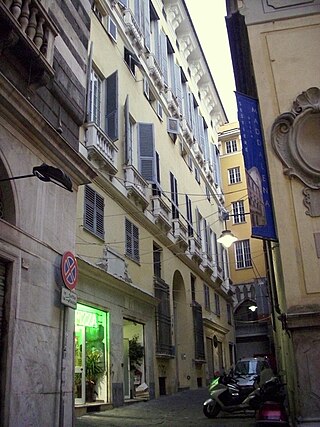
The palazzo Gio Battista Grimaldi is a building located in vico San Luca at no. 4 in the historical centre of Genoa, included on 13 July 2006 in the list of the 42 palaces inscribed in the Rolli di Genova that became World Heritage by UNESCO on that date.
Wikipedia: Palazzo Gio Battista Grimaldi (Vico San Luca) (EN)
99. Palazzo Gio Battista Grimaldi
The Palazzo Gio Battista Grimaldi is a building located in Piazza San Luca at number 2 in the historical centre of Genoa, included on 13 July 2006 in the list of the 42 palaces inscribed in the Rolli di Genova that became World Heritage by UNESCO on that date. The Church of San Luca (Genoa) is located in the same square.
Wikipedia: Palazzo Gio. Battista Grimaldi (Piazza San Luca) (EN)
100. Galata Museo del Mare
The Galata - Museo del mare is a maritime museum in the Italian city of Genoa. It is the largest museum of its kind in the Mediterranean area and also one of the most modern in Italy. The museum is located on the grounds of the Porto Antico, in the Palazzo Galata in the Darsena district, where galleys were built in the Republic of Genoa era. It is close to downtown Genoa, the Port of Genoa, and within walking distance of Genova Principe train station and Darsena metro stop. It opened in 2004 as part of Genoa's 2004 European Capital of Culture celebration.
Share
Disclaimer Please be aware of your surroundings and do not enter private property. We are not liable for any damages that occur during the tours.
